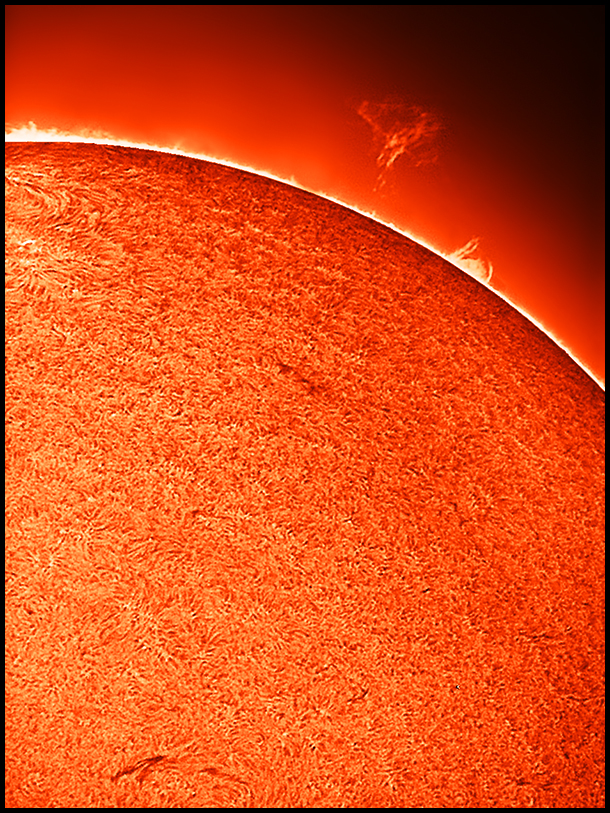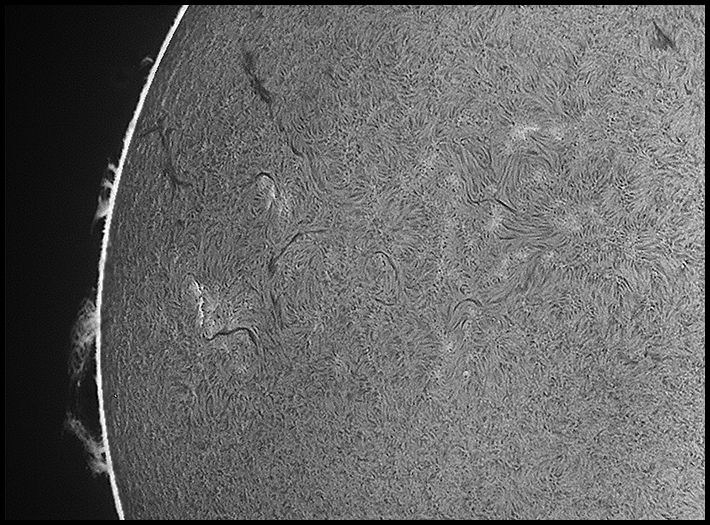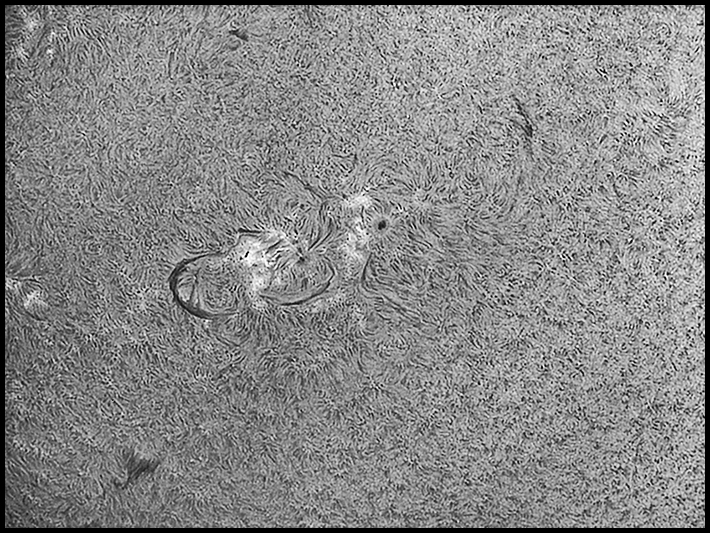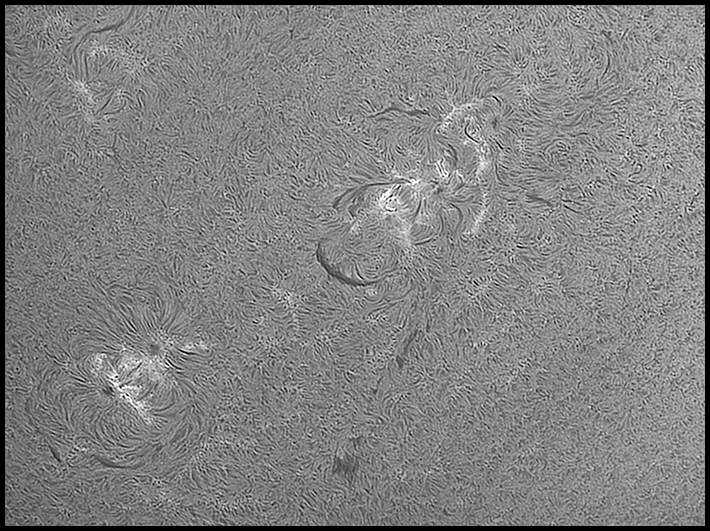|
I had the RiteAV ethernet cable bagged up on top of my office trash bin when the housekeepers came. One suggested it would make a good clothes line. Go for it, says I. Recycling in action. The Cables to Go ethernet cable works fine for telescope and camera control, but the transfer speeds from the computer out by the telescope to my desktop remain disappointing. They are faster, but not by much. The remaining "air gap" of about five feet from the wireless router to the computer must be more of a bottleneck than I suspected. I've (just now) bridged it with a short Cat5 patch, so we'll see about transfering videos again soon. In the meantime, today's solar review:
Surface: 17ms x 400, 5db. Best 40% selected.
17ms x 400, 6db. Best 50% selected.
5/17/2012. Commanded, acquired, and downloaded to the desktop all via the network, no trotting back and forth with flash or portable hard drives, no waiting to bring the notebook inside. The wired connection works great. Transfering a pair of 1GB files took 3-4 minutes total. Concatenated them, selected the best 500 out of 1,700 frames, stacked them and massaged the result all without leaving my desk or letting my coffee get cold.
ARs 1482 & 1479
This stack defeated big, slow seeing in the early morning. Near noon, with a smaller airmass, the amplitude of the seeing was much smaller but instead of "boiling and roiling" the air was "shimmering." I kept the solar image on my second monitor, watching flares play around (big but not particularly intense) 1479. I was also watching to see when the seeing was particularly steady. Once or twice, it was so still that I thought the capture software or the remote desktop had frozen, and at those times I grabbed a couple of 400 frame captures and built an image from the best 200 frames. The result falls short of the 500 frame example above only in the finest grained noise characteristics -- that is, only because electronic noise was be reduced in the 2.5x taller stack (by a factor of the square root of 2.5, actually). I think the image from the afternoon clip shows gradations very nearly as well and detail just as fine as the morning image distilled from more data. When all is said and done, seeing matters. We've reached a lovely and problematic point: the images look better at higher resolution than is convenient to share via the Slow Blog.
:: top ::
|
© 2011, David Cortner



